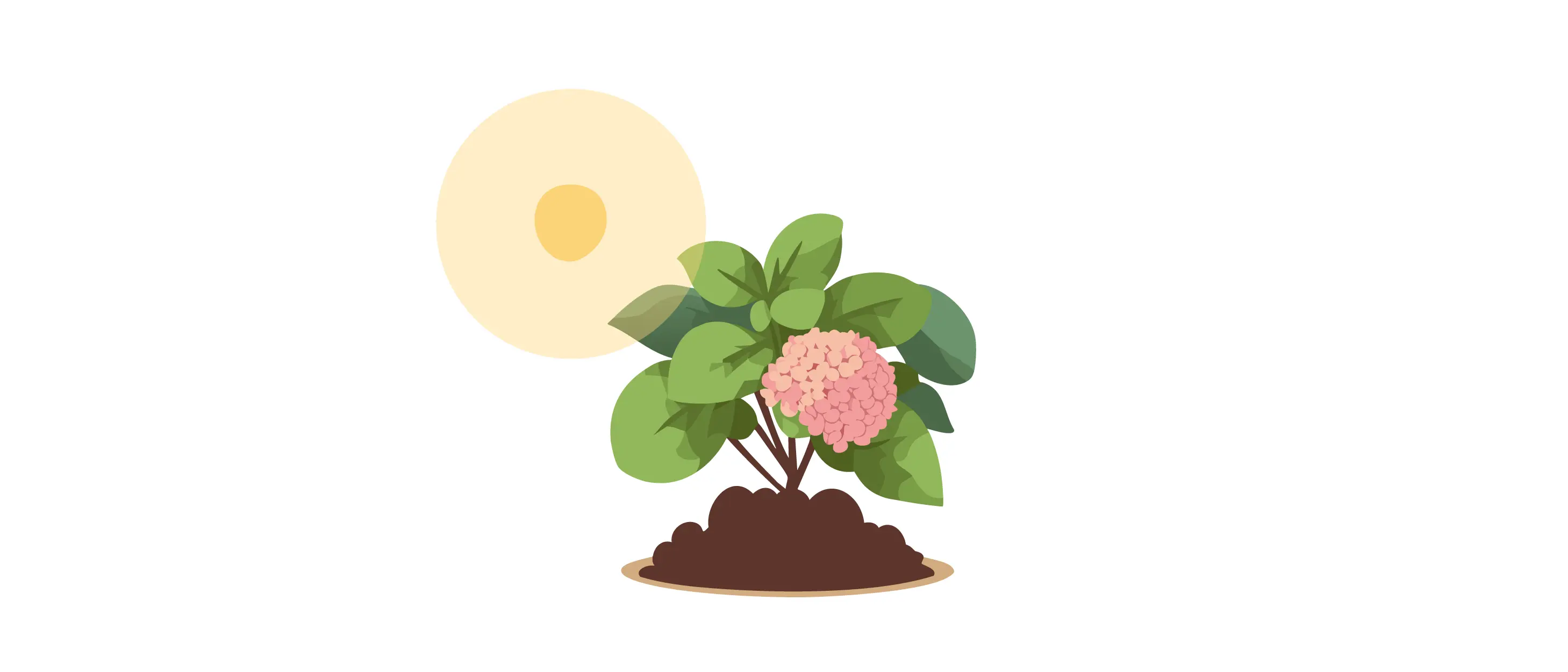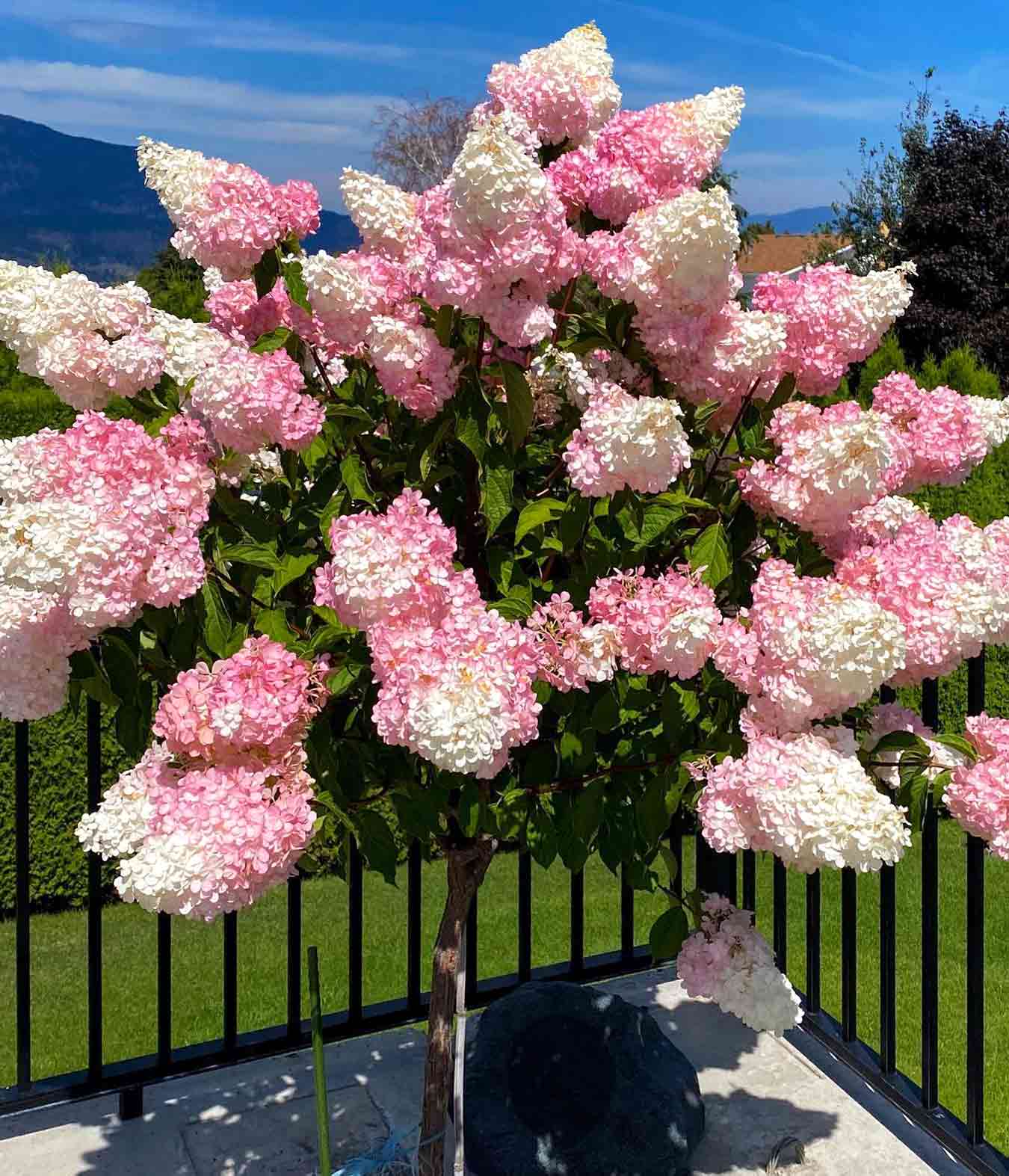If you’re looking to add a little wonder to your garden, then vanilla strawberry hydrangea is a choice that really can’t fail you. In this guide, we’ll show you how simple and rewarding it is to grow and care for these delightful plants, ensuring they thrive and brighten up your outdoor space year after year.
This charming plant gets everyone’s attention with flowers that change from creamy white to a lovely pink as the season unfolds. Vanilla strawberry hydrangeas start their blooming in mid-summer and keep your garden vibrant through early fall.
- Flowers turn from white to pink over the season.
- Blooms mid-summer to early fall; long-lasting.
- Thrives in moist, well-drained soil and partial shade.
- Cannot legally propagate due to trademark.
And here’s the best part: with just a bit of love and care, hydrangeas can be a part of your garden for quite a long time!
- Botanical name: Hydrangea paniculata ‘Renhy’
- Plant type: Deciduous shrub
- Bloom time: Mid to late summer
- Sun exposure: Full sun to partial shade
- Soil type: Moist, well-drained
- Soil pH: Slightly acidic to neutral
- Hardiness zones: 3–8 (USDA)
RELATED: In This Online Group, People Share Examples Of Botanical Wonders And It’s Soul-Refreshing (50 Pics)
How to Grow and Care for a Vanilla Strawberry Hydrangea
Soil
Water
Humidity
Light
Temperature
Fertilizer
Potting
Pruning
If you’ve chosen a vanilla strawberry hydrangea tree, which is the same plant trained to grow as a small tree with a single trunk, pruning also helps maintain this unique form. You’ll want to remove any lower sprouts to keep that clean tree trunk and trim the canopy to enhance its shape. This special pruning ensures the focus is on the spectacular blooms atop the tree’s “crown.”
Regular pruning encourages healthy growth and bloom production and gives you the chance to shape your hydrangea into a form that best suits your garden’s aesthetic.
RELATED: 50 Front Yard Landscaping Ideas to Beautify Your Outdoor Space
Propagating
While propagating a vanilla strawberry hydrangea isn’t impossible, you should keep in mind it’s prohibited. This cultivar is trademarked and copyrighted, and unauthorized propagation is not allowed. If you’re looking to add more of these plants to your garden, the best approach is to purchase them from licensed nurseries or garden centers.
Common Problems
Caring for a vanilla strawberry hydrangea usually goes smoothly, but sometimes, nature throws a curveball in the form of pests and diseases. Here’s a quick rundown on what to keep an eye out for.
Image credits: KaleidoscopeOk2677
When it comes to diseases, you can keep them at bay by ensuring good air circulation. Spacing your hydrangeas properly from other plants can also make a big difference.
Pests might find your hydrangeas tempting—if you spot them, a timely spray of neem oil will solve the problem.
Deer can be particularly fond of hydrangeas, often targeting the tender flower buds. A bit of protection during winter and early spring can save your blooms. Rabbits tend to leave older plants alone but might nibble on younger ones.
Overwatering can be a sneaky issue, often signaled by yellowing leaves. This symptom can also arise if the plant isn’t getting enough light, particularly in the dense inner areas. A few yellow leaves aren’t a major concern, though, especially if hidden away inside the plant.
FAQs
How Big Does a Vanilla Strawberry Hydrangea Get?
A vanilla strawberry hydrangea can grow quite impressively, reaching 6–8 feet in height and spreading about 4–5 feet wide.
How Many Years Does It Take Hydrangeas to Grow Full Size?
You can expect your vanilla strawberry hydrangea to reach its full size in about 2–3 years, depending on growing conditions like soil quality, light, and water. With each passing season, you’ll notice it becoming more robust and fuller. Getting a full-grown vanilla strawberry hydrangea tree will take a few years.
Is Vanilla Strawberry Hydrangea Toxic?
Hydrangeas are generally considered to be toxic if ingested. They contain compounds known as cyanogenic glycosides, which can release cyanide when chewed or digested. While severe poisoning is rare, it’s a good idea to keep pets and small children away from these plants.
2Kviews
Share on Facebook
 Dark Mode
Dark Mode 

 No fees, cancel anytime
No fees, cancel anytime 
































































17
0